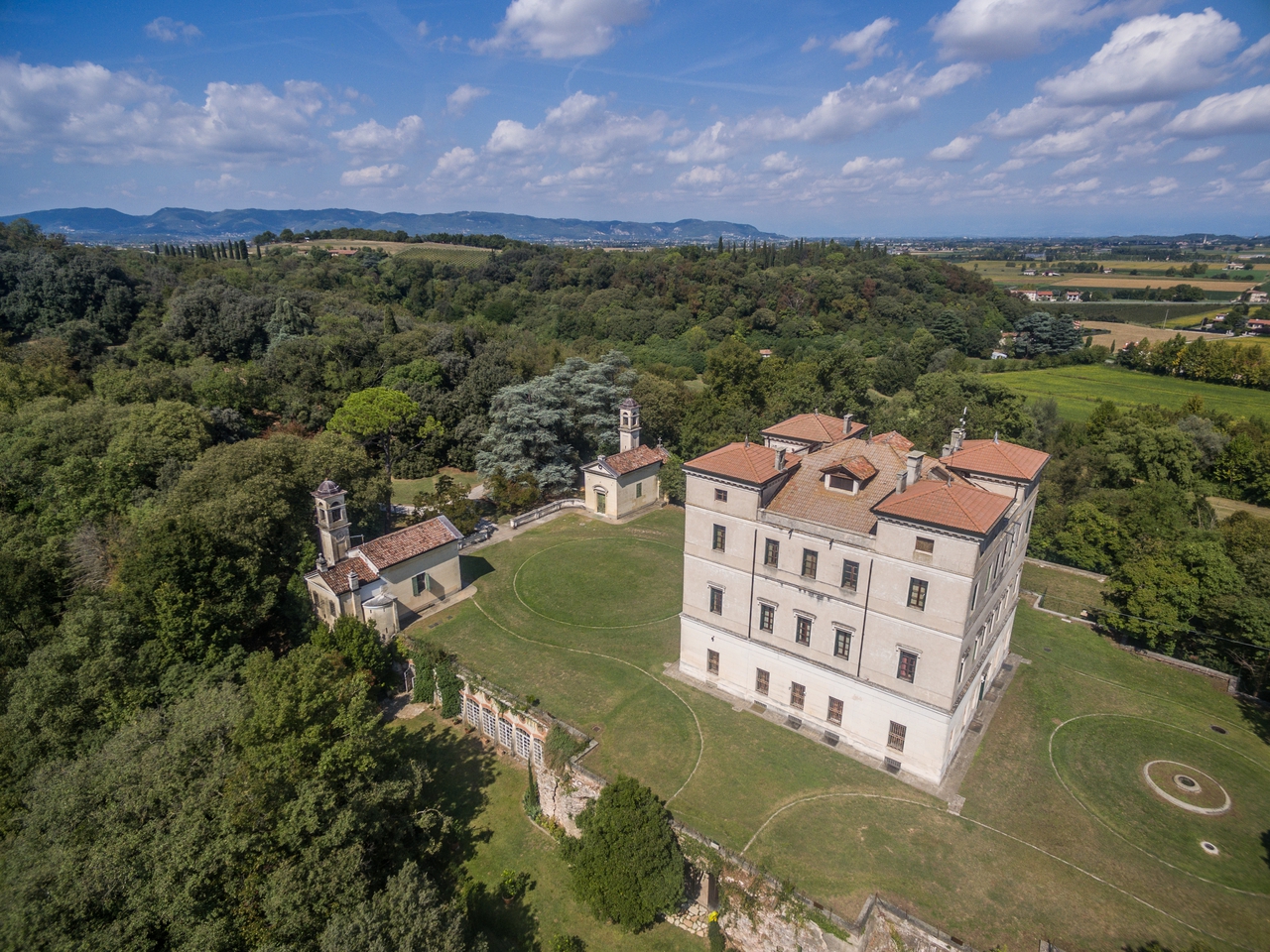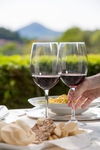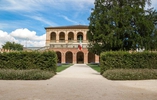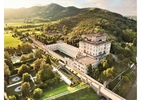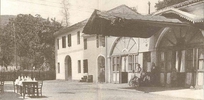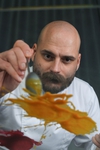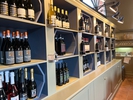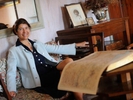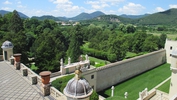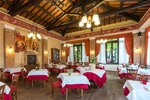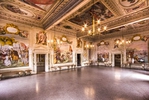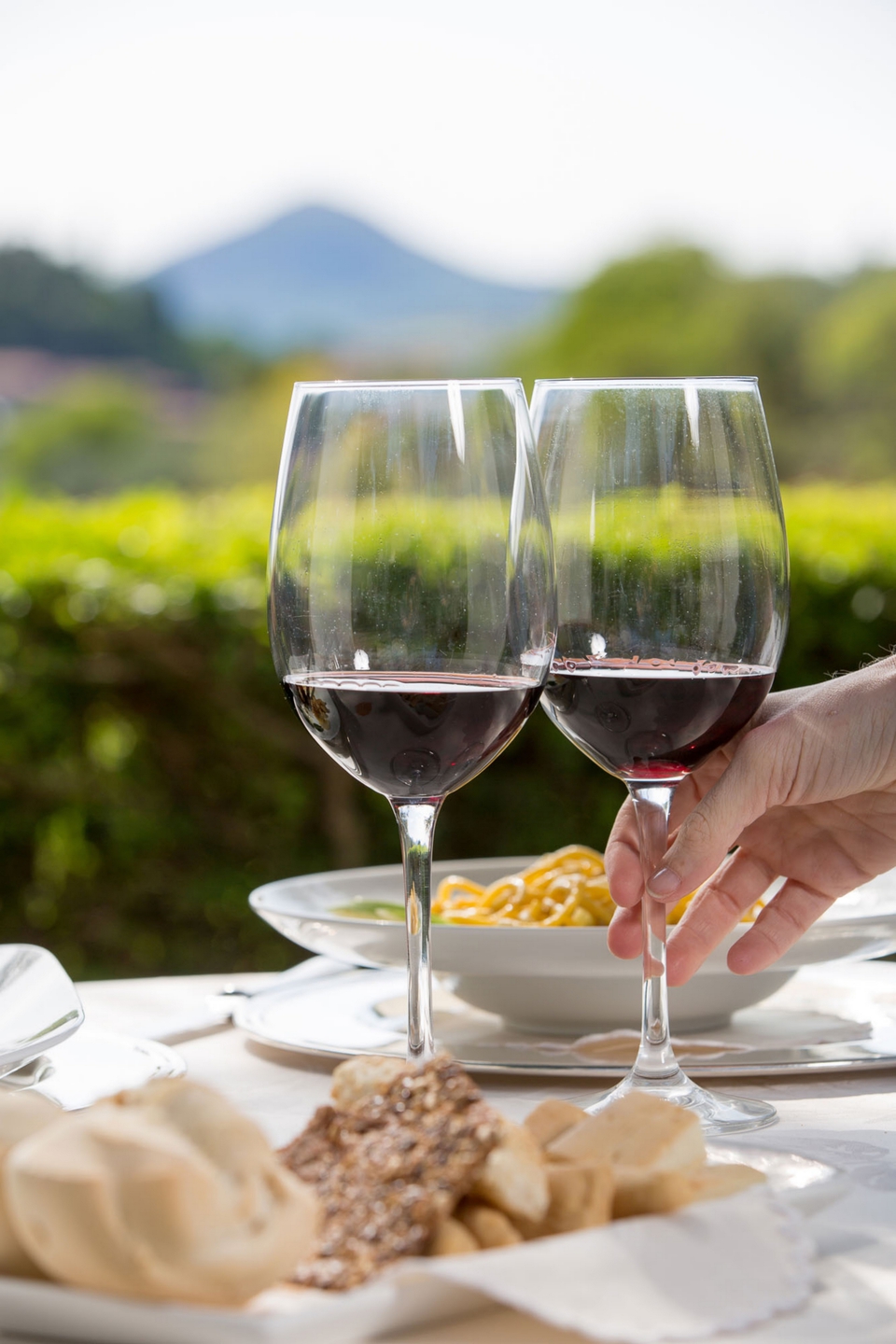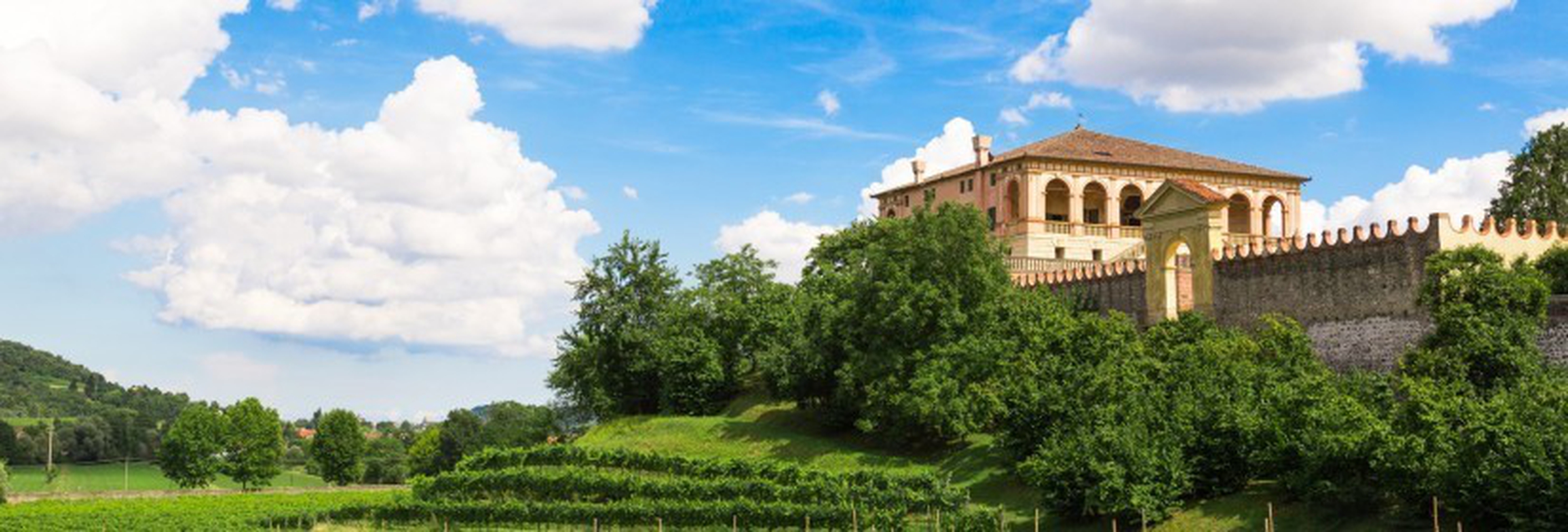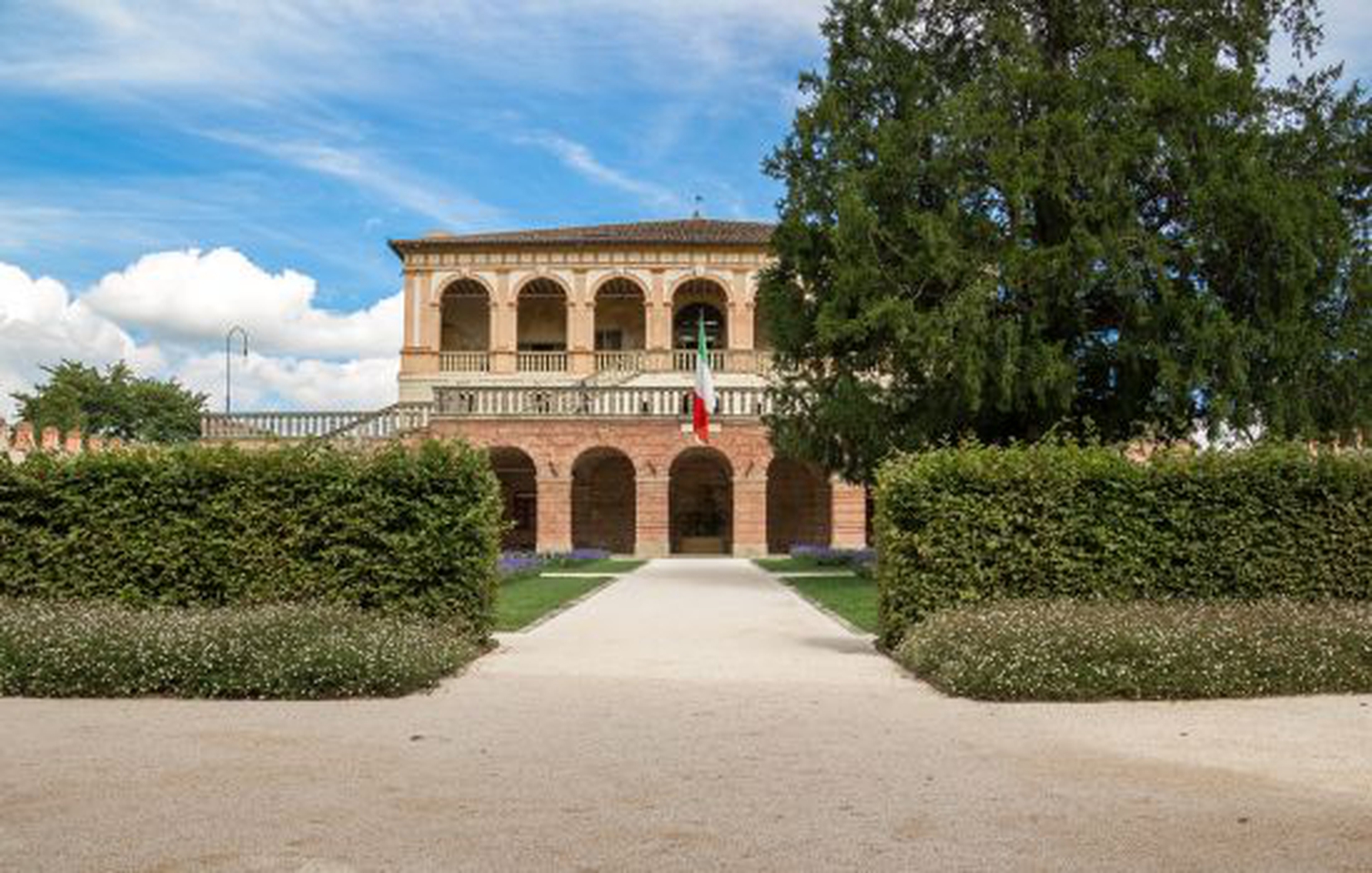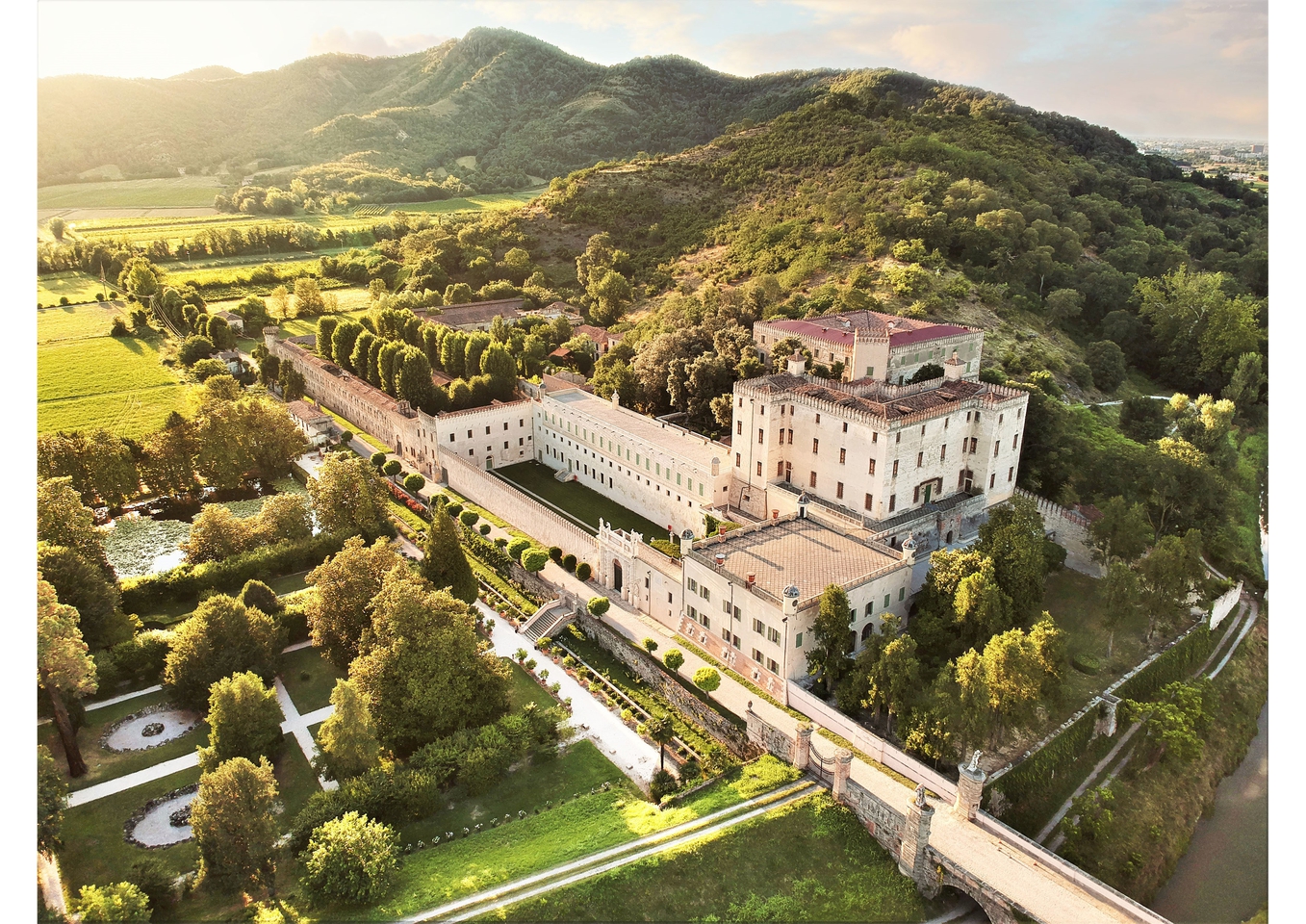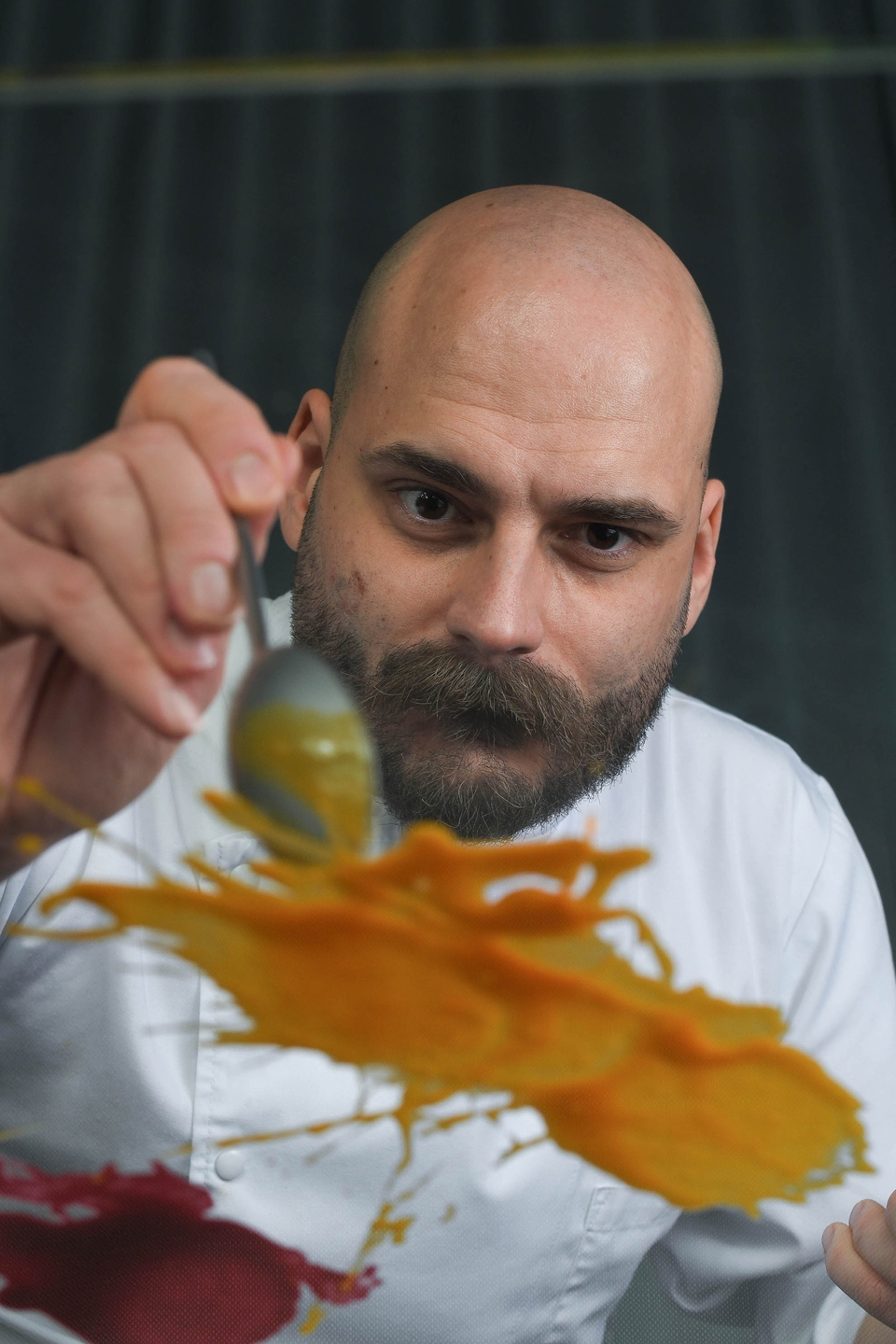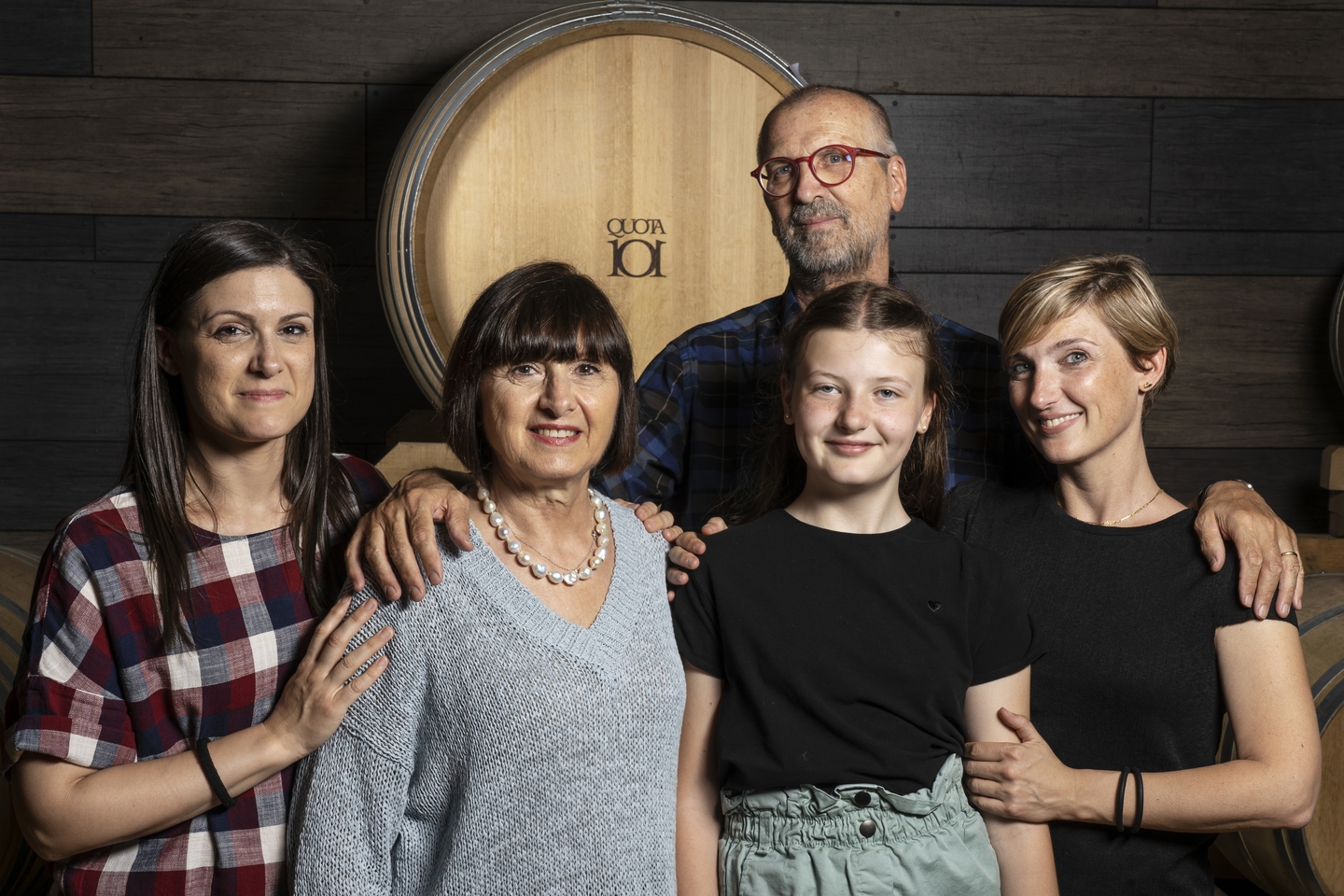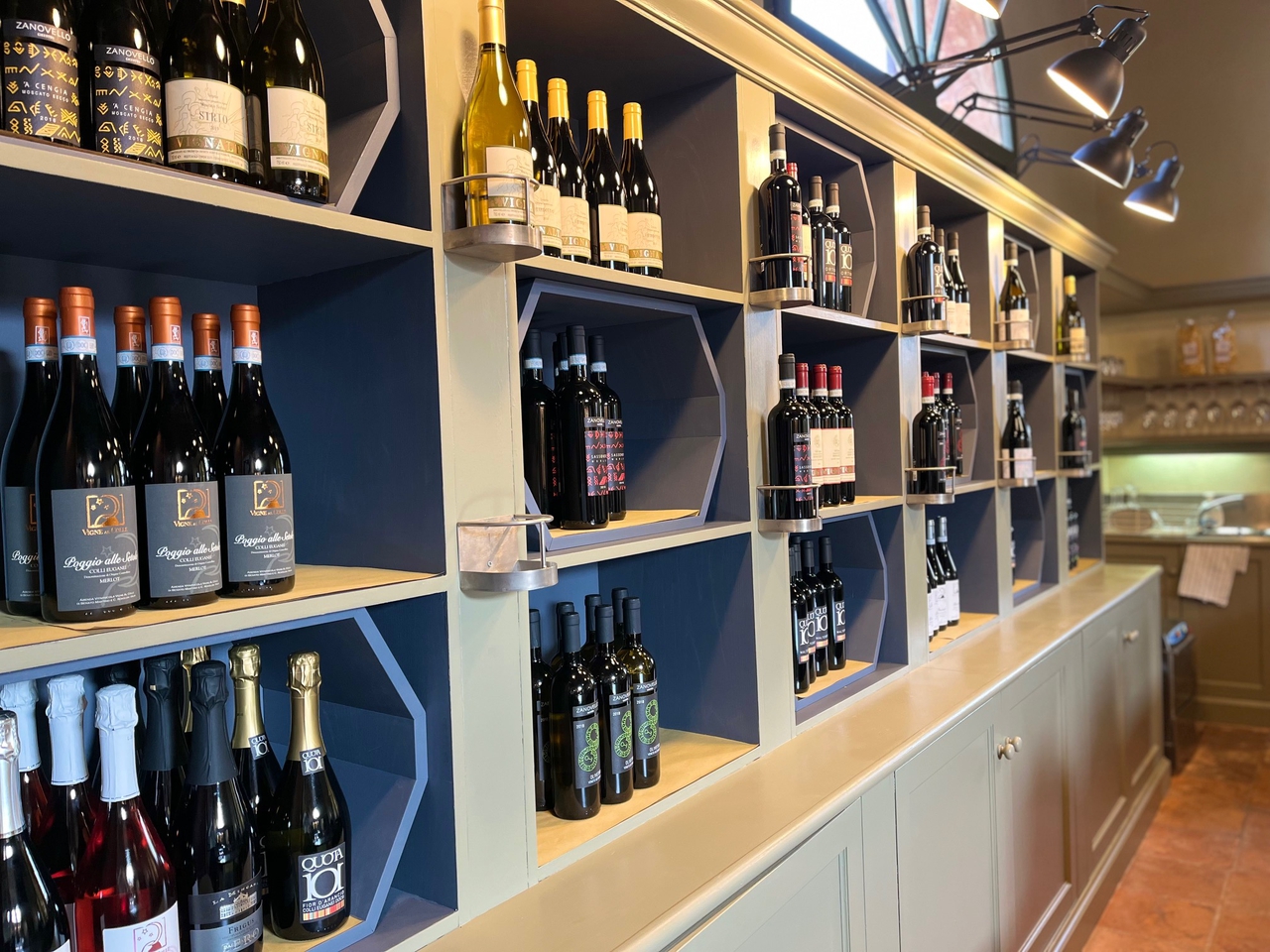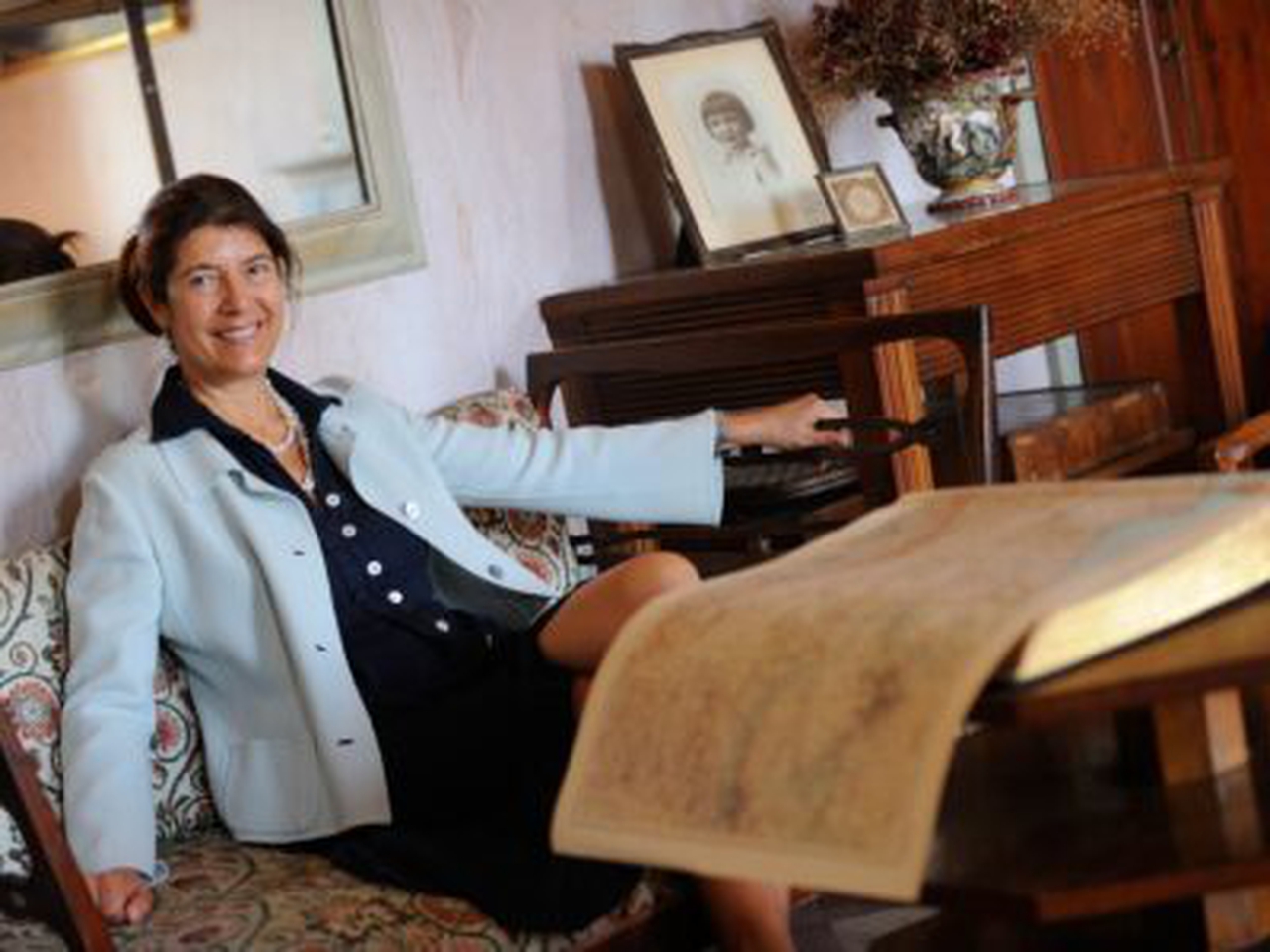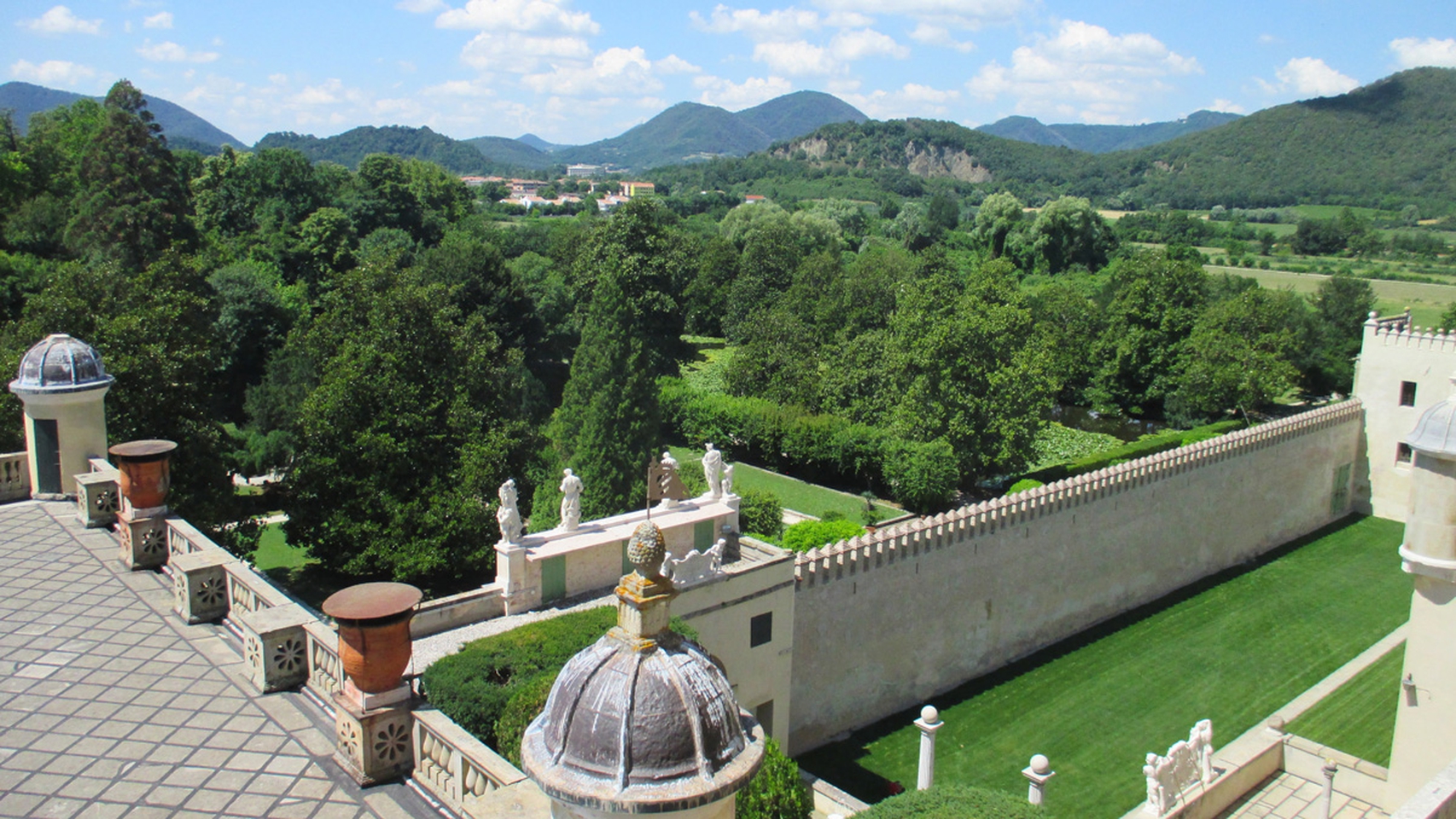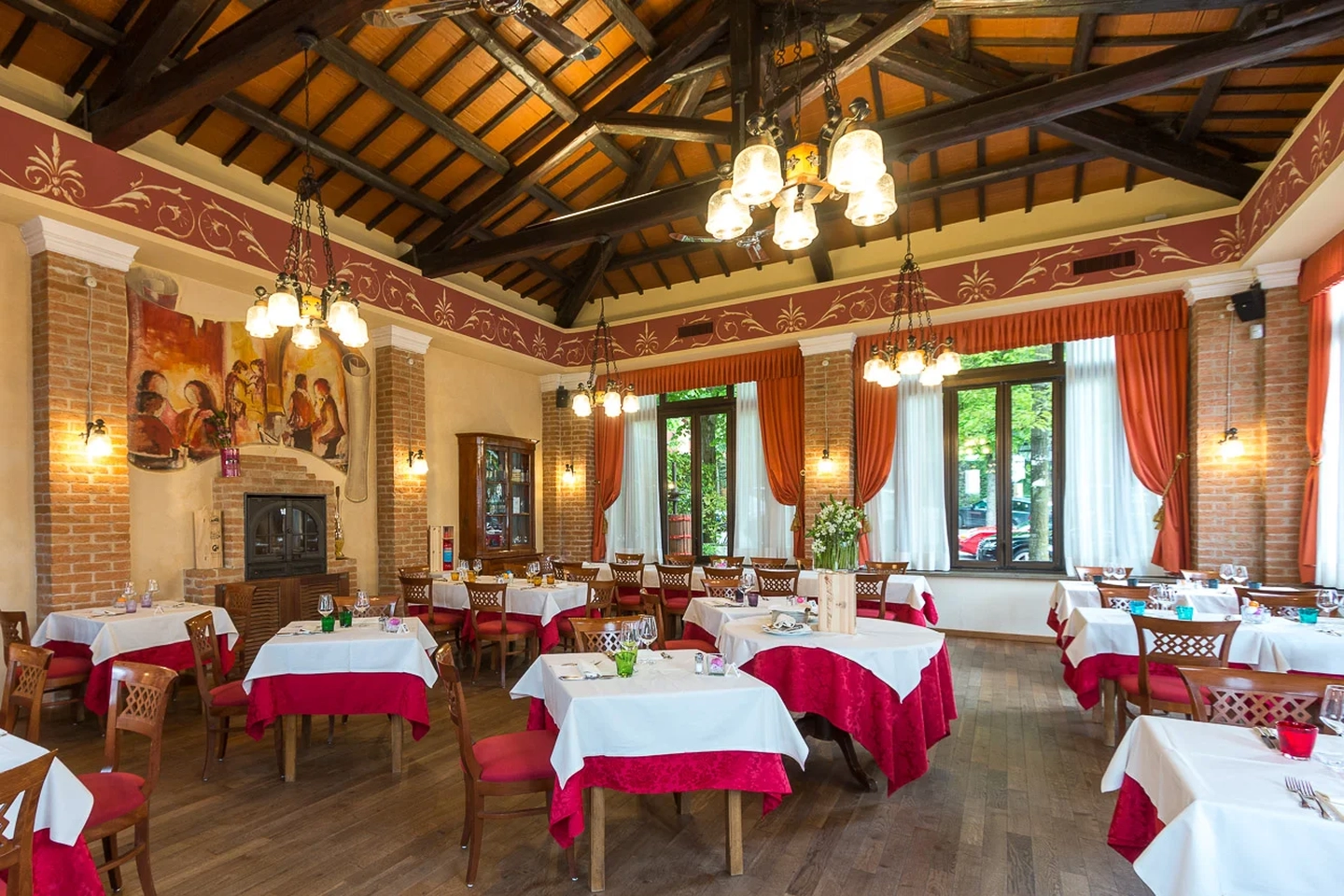Frassanelle
Linda Fornara Bertona
Wellness and ancient flavors
Savoring the delicacies of Venetian cuisine, soaking in thermal waters with important healing properties, admiring the culture and castles of an ancient past that still stands strong is pleasure and luxury. A trip to the Euganean Hills, a lush area in the heart of the Veneto Region, leaves emotions and well-being behind. The Euganean spas boast of being the largest spa in Europe with hyperthermal waters and high-quality certified patented mud.
The Euganean Hills emerge in the heart of the Venetian plain with their conical volumes. The geometry is the result of volcanic phenomena dating back more than 40 million years. Landscape charm is accompanied by a surprising wealth of cutura. Corners of nature and historic villages follow one another along the many itineraries that can be traveled within the park, even by bicycle.
Completing the stay in the Euganean Hills are the local food and wine excellences, from exclusive culinary specialties to fine wines: Pinot grigio, Chardonet, Moscato fragrant and characteristic of the northern areas, Merlot and Cabernet typical of the area further south.
La strada del vino
La strada del vino promotes the Euganean Hills area. "The Association brings together wineries, farms, accommodations and restaurants to offer every traveler a high quality experience. We put commitment and passion into our vineyards. Quota 101 is not only the altitude of the winery, but it is above all a family that has chosen the path of viticulture since 2010, a challenge that also engages my daughters Silvia and Roberta," explains President Roberto Gardina owner of Azienda Vinicola Quota 101 in Torreglia. "The fortunate hillside area was the birthplace of the first Italian Bordeaux winemakers. In 1870 in Lispida, the Corinaldi counts planted the first Cabernet Sauvignon and Cabernet Franc vineyards. Among the Doc's most representative wines are Serprino, Colli Euganei Rosso and Moscato-based whites. The DOCG, on the other hand, is represented by Fior d'Arancio wine in its three versions: dry, sparkling and passito. The ancient Fior d'Arancio vine arrived many centuries ago after a long journey from the East. Thanks to the love and work of our winemakers it became the spearhead of Euganean wine production and won the prestigious Docg in 2010".
Famous restaurants, delicious cured meats
We highly recommend enjoying Veneto specialties at the Antica trattoria da Ballotta (www.ballotta.it) in Torreglia owned by the Legnaro family. A warm and welcoming environment known for being the oldest restaurant in the Euganean Hills that carries on a centuries-old tradition of Paduan cuisine. Illustrious figures such as Casanova, Galileo, Goethe and D'Annunzio have passed through here. The trattoria was created in the early 17th century in a former dependency of the monastery of the Augustinian monks of Monteortone. On the table you cannot miss the Baccalà mantecato all'olio dei Colli, bigoli al ragù di datra, roasted torresano, Euganean cured meats and, of course, the Paduan hen.
For quality shopping we recommend a visit to Salumificio Giovanni Fontana in Este since 1941 (www.salumificiofontana.it). Here pork is processed in an artisanal way to ensure a delicious and genuine product. Specialties include Prosciutto Veneto DOP, salami, coppe, cured pancetta, coppa di testa and salmistrate tongues. To understand the immense amount of work that goes into a family business and the long periods of curing and selection of raw materials, the salumificio is worth a visit by reservation (info@salumificiofontana.it).
Sophisticated in flavor, unconventional, with meticulous service of courses that arouse amazement at the sight for originality and attention to detail is the fine-dining risorante Incàlmo located inside the Hotel Beatrice on Viale Rimembranze 1 in the town of Este (www.incalmoristorante.com). Refined restaurant that enhances the Sixties style. Here a team of young chefs and managers strive to offer good food and new food and wine trends.
History and culture
Catajo Castle was built on orders of the Obizzi family, who originated from Burgundy (France). In Italian history they are considered “soldiers of fortune” who arrived in Italy following emperor Henry II in 1007. In a time of peace, Pio Enea I Obizzi (who gave the name to the howitzer, a siege cannon, in Italian obice), attracted by the beauty of the Euganean Hills, decided to build a palace that would represent the glory of the Obizzi family, enlarging what previously was the maternal house built during the firts few decades of the 16th century, today known as Casa di Beatrice. The castle was designed by Pio Enea himself, aided by the architect Andrea Da Valle, and it was conceived as halfway between a military castle and a royal villa.
The most important part of the castle, called Castel Vecchio, was built in just three years, between 1570 and 1573, although many of the extensions were completed in the second half of the 19th century. The plan in the beginning was to just paint the external walls (now only partially visible), but in 1571 Pio Enea asked Gian Battista Zelotti, disciple of Paolo Veronese, to decorate the inside walls with beautiful paintings depicting the deeds of his family, creating one of the most spectacular fresco cycles of Venetian villas.
Intellectual circles between clergy and nobility
Standing out on a knoll of the Euganean Hills, encircled by the lush, untainted greenery of the Veneto countryside, the Villa dei Vescovi is a highly significant villa that blazed a trail in this part of north-eastern Italy (and, indeed, far beyond) for a return to classical models, with echoes of the Roman Renaissance, thus anticipating Palladio’s widely copied aesthetic.
The concept for the Villa dei Vescovi (“Bishops’ Villa”) was originated in the early 16th century by nobleman Alvise Cornaro at the behest of the Bishop of Padua, who wanted a venue for his intellectual circle that would tap the potential of the countryside as a catalyst for elevated thoughts and reflections, which were considered essential elements for governing well. Designed in compliance with these ideals by the Veronese architect Giovan Maria Falconetto to a rigidly geometric plan, the villa then benfitted from the input of Giulio Romano. It constitutes a refined experiment in Humanist culture, in which architecture, art and the landscape engage with each other in an ongoing game of visual references through the loggias and terraces, with a view to enhancing the wellbeing of those spending time there.
As you approach the villa, a series of vineyards gives way to the verdant geometries of the walled garden, after which the beauty of the real landscape is once again reflected in the idealised panoramas of the loggias and the interiors, covered in their entirety with frescoes by the Flemish painter Lambert Sustris. The original vocation of the property, as a place with the ability to inspire and elevate the spirit, survives today: the invitation stills stands to immerse yourself in the Villa dei Vescovi, enjoying a day of creative otium or staying overnight in the guest accommodation, savouring the benefits of its heart-warming ambience.
The luxury of craftsmanship
Este Ceramiche Porcellane, one of the oldest manufactures in Europe, offers an entire historical journey of the art of tableware and decorative objects from its origins in the 18th century to present-day design, in the continuity of place and handmade processes.
Fascinating is the location and atmosphere. The factory is located along the city walls and overlooks the canal that used to lead to Venice. The earth enters as raw material and leaves as precious artifact.
Our sample book of products ranges from antique pieces from the 1700s to pieces from the 19th century, and to modern works of art. Hand painting is without a doubt the most original, prized method of decorating ceramics. The results are incredibly esteemed due to both the colors, and almost unlimited possibilities for creativity and customization. Using ancient techniques with the added assistance of modern technology has enabled us to elevate the quality of our ceramics.
Golf and chic activities
For golf lovers, biking or horseback riding, the land of the Euganean Hills also offers opportunities. The private park of Frassanelle (www.frassanelle.com), for example, stretches 65 hectares among rolling hills and green meadows and includes within it another 60 hectares of the renowned Frassanelle golf course.
The structure of this Veneto park is owed to Alberto Papafava (1832-1929) a Romanticism painter with great sensitivity to nature, in redesigning the Frassanelle property. "It is a rarity in the panorama of Veneto parks being included in a unified area without interruptions or intrusions of public roads," explains Francesca Papafava dei Carraresi, owner and administrator. "The orographic condition of the territory, diversified between hills and plains, between sunny coasts and shady ravines, has allowed the implementation of an evocative landscape design, making this private park one of the best-preserved parks in the Veneto region at the end of the 19th century".
14/10/2022


